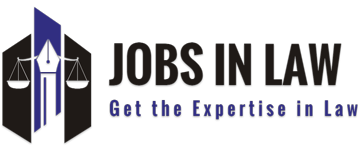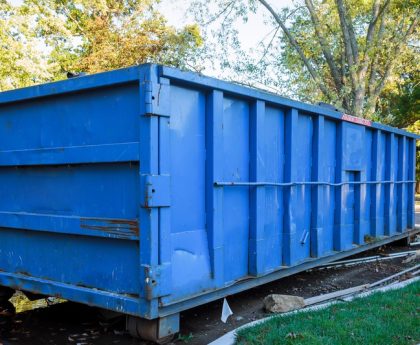In the fast-evolving realm of aeronautic fabrication, integrating advanced technologies is paramount to achieving superior performance, enhanced precision, and higher efficiency. Among these cutting-edge innovations, laser technologies have made a remarkable impact, revolutionizing various aspects of aircraft manufacturing.
Laser technologies are extensively applied in various stages of aeronautic fabrication due to their precision, efficiency, and versatility. Here are the key areas where laser technologies are predominantly used:
1. Laser Cutting
Laser cutting is widely used in the fabrication of aeronautic components. This process of aerospace composite innovations involves using a high-powered laser beam to cut materials precisely. It is particularly beneficial for cutting complex shapes and intricate designs from sheet metal and composite materials. The advantages of laser cutting include:
-
Precision and Accuracy: The high precision of laser cutting ensures that components meet exact specifications.
-
Smooth Edges: Laser cutting produces clean and smooth edges, reducing the need for further finishing processes.
-
Material Versatility: It can cut through various materials, including aluminum, titanium, stainless steel, and advanced composites.
2. Laser Welding
Laser welding is crucial in joining aeronautic parts, offering high-strength and precise welds. It is used to assemble parts of the fuselage, wings, and other structural components. Key benefits include:
-
High Strength: Produces solid and reliable welds essential for the structural integrity of aircraft.
-
Minimal Distortion: The focused heat of the laser minimizes thermal distortion, preserving the integrity of the materials.
-
Speed and Efficiency: Laser welding is faster than traditional welding methods, increasing production efficiency.
3. Laser Drilling
Laser drilling creates precise holes in various components, such as turbine blades, fuel injectors, and engine parts. This technique is favored for its:
-
Precision: Capable of producing small, precise holes with high accuracy.
-
Consistency: Ensures uniform hole quality, which is critical for components subjected to high stress and temperatures.
-
Speed: Rapid drilling speeds enhance manufacturing efficiency.
4. Laser Cladding
Laser cladding involves adding a material layer to a surface to improve its properties, such as wear resistance and corrosion protection. It is often used for:
-
Repair and Maintenance: Restoring worn or damaged components to extend service life.
-
Enhanced Properties: Improving surface properties without affecting the underlying material.
-
Cost Savings: Reducing the need for component replacement by refurbishing existing parts.
5. Laser Additive Manufacturing (3D Printing)
Laser additive manufacturing, or Virtek Iris Spatial Positioning System, is increasingly used to create complex aeronautic parts. This technology builds parts layer by layer from metal powders, offering:
-
Complex Geometries: Enabling the production of intricate designs that are difficult or impossible to achieve with traditional methods.
-
Material Efficiency: Minimizing waste by using only the material needed for the part.
-
Rapid Prototyping: Accelerating the development of prototypes and reducing time-to-market for new components.
6. Laser Surface Treatment
Laser surface treatment enhances the properties of a material’s surface, such as hardness and resistance to wear and corrosion. Applications include:
-
Surface Hardening: Increasing the hardness of critical components like gears and bearings.
-
Corrosion Resistance: Improving the durability of parts exposed to harsh environments.
-
Surface Texturing: Creating specific surface textures to enhance bonding or friction characteristics.
7. Laser Marking and Engraving
Laser marking and engraving are used for part identification, traceability, and aesthetics. These processes involve using lasers to etch permanent marks on components. Benefits include:
-
Durability: Produces permanent marks that can withstand harsh conditions.
-
Precision: Allows detailed and precise markings, including serial numbers, logos, and barcodes.
-
Non-Contact: No physical contact with the part, preventing any potential damage.
8. Laser Measurement and Inspection
Laser technologies are also employed to measure and inspect aeronautic parts to ensure they meet stringent quality standards. This includes:
-
Laser Scanning: Capturing detailed 3D models of components for inspection and reverse engineering.
-
Laser Interferometry: Measuring dimensions and detecting surface defects with high precision.
-
Non-Destructive Testing: Inspecting internal and external structures without damaging the parts.
9. Laser Peening
Laser peening is a surface enhancement process that uses high-energy laser pulses to induce compressive residual stresses on the surface of metallic components. This technique is particularly beneficial for improving critical aeronautic parts’ fatigue resistance and lifespan. Applications include:
-
Fatigue Life Improvement: Extending the fatigue life of components such as turbine blades, landing gear, and airframe structures by increasing resistance to crack initiation and propagation.
-
Stress Corrosion Cracking Resistance: Enhancing the resistance of parts to stress corrosion cracking is particularly important for components exposed to harsh environmental conditions.
-
Microstructural Refinement: Improving the material’s microstructure leads to better mechanical properties.
10. Laser Ablation
Laser ablation involves using lasers to remove material from the surface of a part with high precision. This process is used for cleaning, surface preparation, and precise material removal. Critical applications in the aeronautic industry include:
-
Coating Removal: This involves removing coatings such as paint, oxidation, or contaminants from the surface of aircraft components without damaging the underlying material. It is beneficial for maintenance and refurbishment tasks.
-
Precision Cleaning: This involves cleaning intricate and delicate parts where traditional methods might need to be more moderate or imprecise. Laser ablation can target specific areas with minimal impact on surrounding materials.
-
Micromachining: Creating fine features, channels, or patterns on components with high precision, which is essential for parts like microelectromechanical systems (MEMS) used in avionics.
Final Thoughts
Laser technologies are integral to the aeronautic fabrication, offering precision, efficiency, and versatility. They are applied in cutting, welding, drilling, cladding, additive manufacturing, surface treatment, marking, and inspection. These applications enhance aeronautic components’ quality, performance, and reliability, ensuring they meet the rigorous demands of the aerospace industry.



